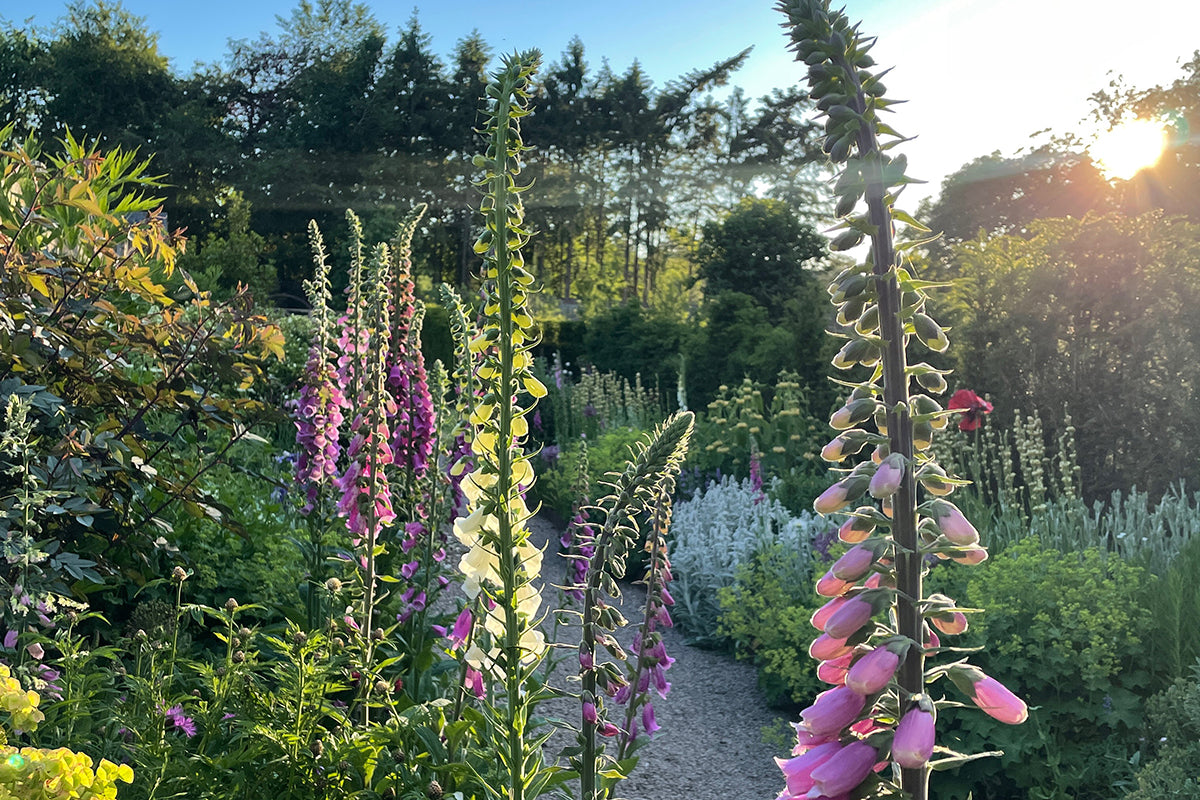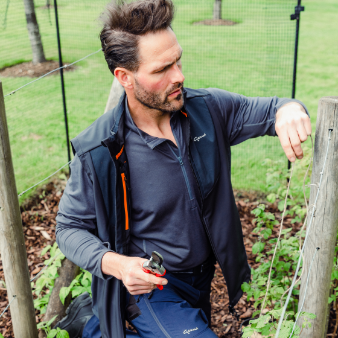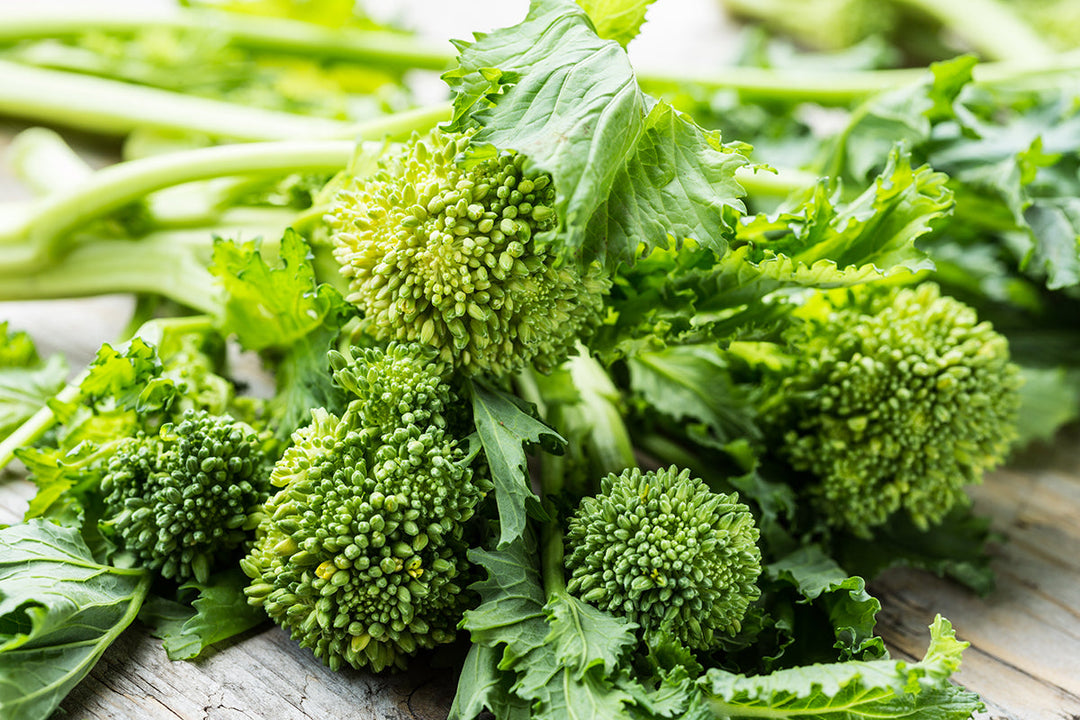Fragrance and nostalgia

The true peak for most gardens in the UK occurs this month, with the summer solstice on 20th June. This marks the longest day, and a shift in season from spring to summer in the Northern Hemisphere.
In all the years we have lived here I have never seen so many foxgloves! Nestled in almost every border throughout the whole garden, there are even some growing in the oddest of places, and they add a mixture of drama and charm to the garden. They have this magic appeal, with their spires that tower above most other plants, adding a dimension to the garden like no other.
When I think of June, I imagine a sea of roses that fill the air with fragrance and nostalgia, flamboyant peonies and frothy nepeta that complete the typical romantic cottage feel. One of the first borders I created when we came here was deliberately crammed with all of the above and more. To this day it continues to excite all the senses, just as I had hoped it would. I love how it has gently matured over the years.
As much as I enjoy swooning over all the flowers here, it’s always worth keeping a pair of secateurs to hand, and here’s why..
1- Prune spring flowering shrubs. This job can be easily forgotten when there’s so much going on in the garden. I missed doing it on our Ceonothus a few times and it has grown a bit too big for its space, which means I might have to be a little more brutal with it the following year. Other shrubs we tidy up now are lilacs, Philadelphus and Weigelia. I simply cut away the spent flowers and any unruly branches that might be encroaching into a pathway or invading another plants space. Don’t feel you have to do this job as it isn’t essential but if you have an area that needs controlling then now is your moment!
2- Plant up pots for a late summer display. Usually by now all of my pot grown dahlias are ready to go into the ground or into big pots. We have a fairly large galvanised cattle drinker next to our boot room that i grow tulips in for spring and dahlias for the summer. Each time I change the planting, I make sure the whole planter is completely emptied! That is to prevent disease, and to clear all roots that might have blocked the drainage holes. It can be a lengthy task, but well worth the effort for the incredible displays and joy it brings during the spring and summer months. You don’t have to use dahlias, especially if you have smaller pots to fill. I’ve used Salvias with great success, and Cosmos too. For a more compact and permanent look in a slightly shadier spot, I use different varieties of Tiarella or Heuchera as their leaves are semi evergreen and come in a wide selection of colours. There’s also some lovely bedding plants, some of my favourites are Diascias and Geraniums because they are tough, and don’t mind if I occasionally forget to water them!
3- Staking tall and floppy plants. This has always been my downfall, the only excuse I can give is that some plants bolt before I know it or get to them … or we get a deluge of rain that flattens certain flowers that would normally be okay. I think the trick is to be a vigilant as possible, act quickly, and have a backup stash of good quality metal plant supports that you can easily prop up anything that has started to lean or has collapsed. If it’s too late, then cut to the base, and put into a vase to enjoy inside.
4- Rose deadheading. A task that I enjoy doing, and is essential to prolong the flowering season throughout the garden. It’s better and more enjoyable if done first thing in the morning, or in the evening as the sun is setting, preferably with a glass of something refreshing to hand! The flowers I tend to focus on during this month are the roses, purely because we have so many and keeping them properly deadheaded means more flower production (if they are repeat flowering varieties). All I do is hold the spent flower head, count two leaves beneath it, and snip slightly above the second leaf at the same angle of its growth. Bear in mind that from the base of that second leaf you are cutting above, a new rose bud might grow, so try not to be too keen!
5- Watering. Don’t be fooled if we’ve had a wet and blustery May. If the weather has warmed up and the sun has been shining consistently for more than 3-4 days, be prepared to start watering your pots before they become too stressed! We have to be very selective here when it comes to watering plants, having a big garden can mean only focusing on pots, newly planted perennials and any trees and shrubs that have been planted within the last two years. All of these I would class as priorities, anything else has to fend for itself...unless it is showing signs of stress. Top tip if you are going away, try and move all of your pots into a shady place, keeping them as close together as possible. This will help them to retain more moisture, water them all very well on the day you go away, and hopefully they should be fine for a week or so.
Did someone say it’s Pimms o’clock? Wishing you a wonderful month ahead.







